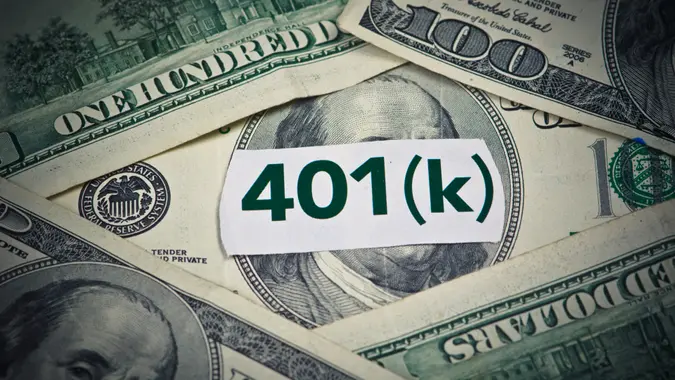First 5 Years of Retirement: 7 Money Moves You Absolutely Must Make
Commitment to Our Readers
GOBankingRates' editorial team is committed to bringing you unbiased reviews and information. We use data-driven methodologies to evaluate financial products and services - our reviews and ratings are not influenced by advertisers. You can read more about our editorial guidelines and our products and services review methodology.

20 Years
Helping You Live Richer

Reviewed
by Experts

Trusted by
Millions of Readers
You can plan for retirement your whole life, but when you get there, you’re bound to encounter a few surprises you just couldn’t see coming. That’s why it’s essential to treat the first five years as an assessment period for analyzing what you got right, what you got wrong, what you left out and what adjustments you need to make to ensure you stay on track and don’t outlive your nest egg.
“The first five years of retirement are typically part of the go-go years — roughly age 65-74 — when ‘young-old’ retirees are in their best health and often anxious to accomplish bucket list purchases or experiences that they postponed while working,” said Barbara O’Neill, Ph.D., CFP, expert reviewer for RetireGuide.com, distinguished professor emeritus at Rutgers University and CEO of Money Talk. “This often informs their financial decision-making and spending patterns.”
Here’s a look at the money moves every retiree should make in their first half-decade after work.
Analyze How Your Pre-Retirement Spending Estimation Held Up to Reality
If you planned diligently, you estimated how much you would spend in retirement while you were still working. Step one is to compare your pre-retirement napkin math to the reality of life after your earning years.
“In the first five years of retirement, everyone should be paying close attention to how much they’re actually spending,” said Sandi Martin, a CFP and retirement expert. “First, because how much you need to spend to be comfortable and secure is one of the most important pieces of information you need to avoid running out of money, and second, because spending patterns might change a little — or a lot — after a big life change like retirement.
“Everyone needs a way to check how much they’re spending, compare it to how much they thought they’d spend when they were planning to retire, and put boundaries in place to control spending in areas where it might get out of control.”
Update Your Budget
Now that you’ve measured your actual spending against what you thought it might be when you were in the planning phase, it’s time to tweak where tweaking is needed.
“Adjust pre-retirement income and expense numbers,” O’Neill said. “Create a budget based on sources of retirement income — e.g., pension, Social Security, part-time work, investment withdrawals — and current expenses. Expenses that often increase in retirement include travel, entertainment, hobbies, philanthropy and gifts and healthcare.”
Refine Your Withdrawal Strategy
If your budget changes, your portfolio withdrawal strategy must change with it.
“Review the retirement budget to determine how much money, if any, must be withdrawn annually from savings,” said O’Neill. “Many people follow the 4% rule — i.e., withdrawing 4% of your portfolio in year one and adjusting that amount annually for inflation. Starting at age 73 or 75, if born in 1960 or later, start taking taxable required minimum distribution (RMD) withdrawals.”
If you’re not yet at RMD age, O’Neill recommends considering tax-reduction strategies like Roth IRA conversions.
Revisit Your Investment Strategy and Holdings
Once you’ve settled into retirement, it’s crucial to take a second look at your investment portfolio and reconsider your asset allocation — particularly for today’s risk-inclined retirees.
“Recent reports have noted that many baby boomer portfolios are stock heavy and perhaps too risky for their age,” O’Neill said. “Typically, older adults gradually shift from a growth to an income-focused approach.”
O’Neill cited the commonly used 110 approach, which subtracts the investor’s age from 110 to find a suitable age-based allocation. For a 65-year-old, the formula is 110-65 = 45% in stocks and the rest in bonds and cash.
Review Your Health Insurance Situation
Nearly everyone should claim Medicare as soon as they’re eligible, but healthcare is not a set-it-and-forget-it element of retirement.
“Medicare begins at age 65,” O’Neill said. “A key money move is reviewing later life health insurance options, including employer retiree benefits, if any, original Medicare, supplemental plans and Medicare Advantage plans.”
She suggested visiting your local State Insurance Assistance Program (SHIP) office for assistance with Medicare decisions.
Update Your Legacy Planning and Sit Down With a Pro
Now it’s time to check whether the plans you made for distributing your assets after you’re gone still hold up and to visit a financial professional to make sure you’re on track with your overall retirement strategy.
“Update your estate plan, including wills and powers of attorney, to reflect your current circumstances,” said estate planning attorney Celeste Robertson, founder of the Law Office of Celeste Robertson. “Engage a financial advisor to craft a sustainable withdrawal strategy, balancing enjoyment and long-term financial security.”
Brush Up on Your Financial Fundamentals
The rules of sound financial management and planning don’t change just because you retire. Within your first five years, check in with your accounts, debt and spending to ensure you’re following the best financial practices that apply to everyone in every stage of life.
“Maintain an emergency fund of three to six months’ expenses, because stuff happens and retirees do not want to deplete their retirement nest egg prematurely to pay for unexpected expenses,” O’Neill said. “In addition, try to enter retirement with low or no debt, especially high-interest credit cards, student loans and a mortgage.”
 Written by
Written by  Edited by
Edited by 


























